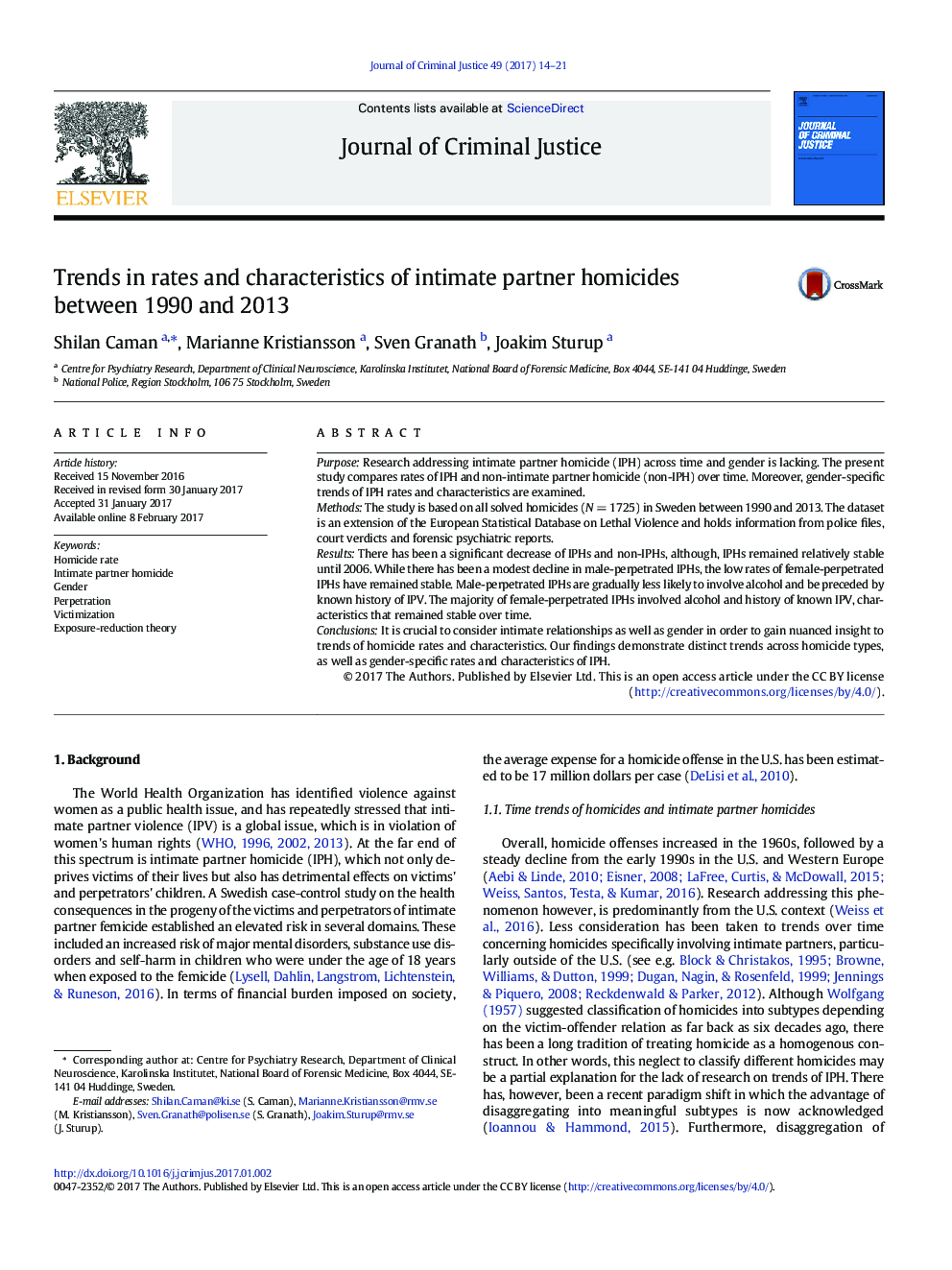| Article ID | Journal | Published Year | Pages | File Type |
|---|---|---|---|---|
| 5034346 | Journal of Criminal Justice | 2017 | 8 Pages |
â¢We study trends in rates and characteristics of intimate partner homicides (IPHs).â¢Our findings elucidate gender-specific rates and characteristics over time.â¢The rates of IPH remained relatively stable until 2006.â¢Male-perpetrated IPHs have declined, female-perpetrated IPHs have remained stable.â¢The characteristics involved in male-perpetrated IPHs have changed over time.
PurposeResearch addressing intimate partner homicide (IPH) across time and gender is lacking. The present study compares rates of IPH and non-intimate partner homicide (non-IPH) over time. Moreover, gender-specific trends of IPH rates and characteristics are examined.MethodsThe study is based on all solved homicides (NÂ =Â 1725) in Sweden between 1990 and 2013. The dataset is an extension of the European Statistical Database on Lethal Violence and holds information from police files, court verdicts and forensic psychiatric reports.ResultsThere has been a significant decrease of IPHs and non-IPHs, although, IPHs remained relatively stable until 2006. While there has been a modest decline in male-perpetrated IPHs, the low rates of female-perpetrated IPHs have remained stable. Male-perpetrated IPHs are gradually less likely to involve alcohol and be preceded by known history of IPV. The majority of female-perpetrated IPHs involved alcohol and history of known IPV, characteristics that remained stable over time.ConclusionsIt is crucial to consider intimate relationships as well as gender in order to gain nuanced insight to trends of homicide rates and characteristics. Our findings demonstrate distinct trends across homicide types, as well as gender-specific rates and characteristics of IPH.
